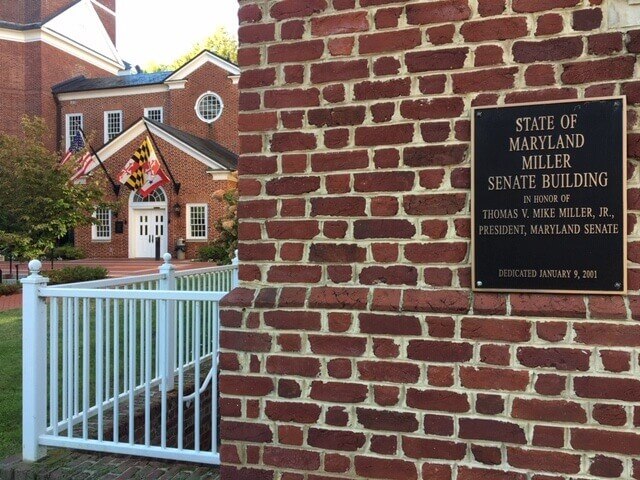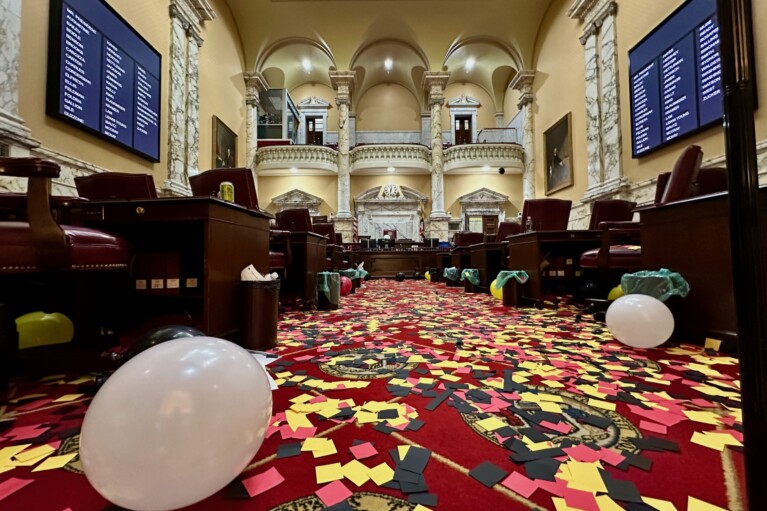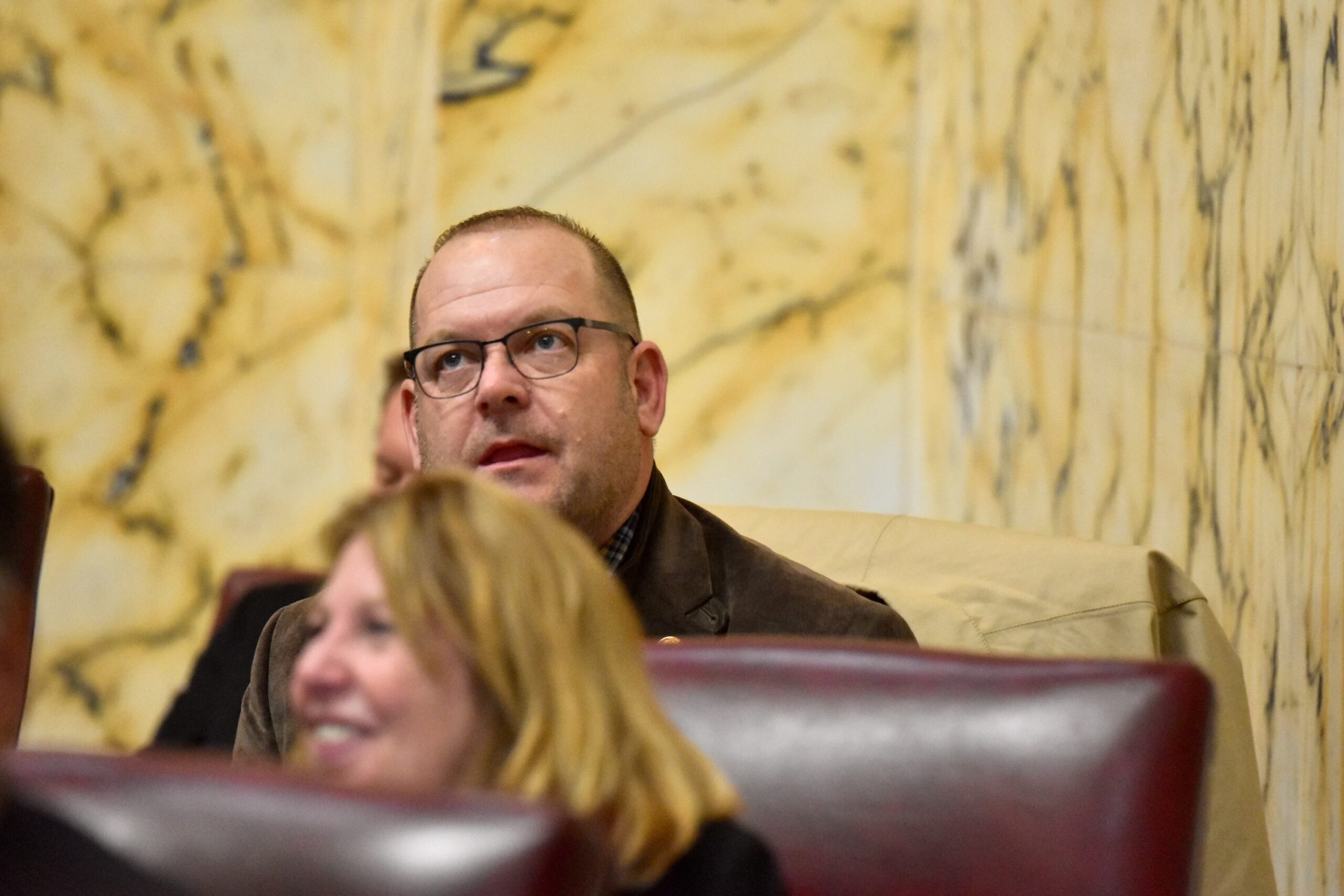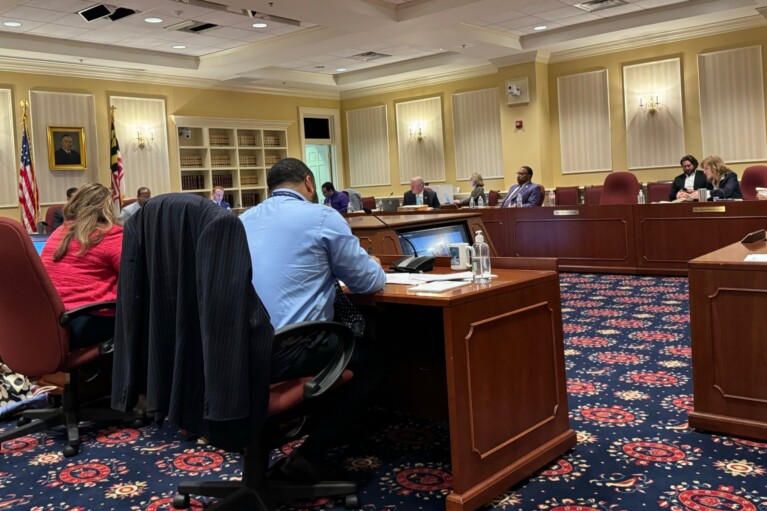Paradox of New-Look Committee Voting Sessions: You Can’t Get In, But They’re More Open

Veteran legislators will tell you the heavy lifting in Annapolis is not always conducted in the historic House and Senate chambers.
The most contentious and time-consuming battles usually happen during late afternoon or evening committee voting sessions. And the laborious process has frequently occurred out of the public eye — until this session. For the first time, all committee work sessions and voting sessions are being live streamed.
Since COVID-19 has forced the House and Senate office buildings to be closed to the public, Sen. Jill P. Carter says expansion of live streaming could not have come at a better time. Carter, a Democrat who represents Baltimore City, is the lead sponsor of several police reform bills, which have dominated debate in the Senate Judicial Proceedings Committee.
“In public hearings, we’re just hearing testimony and can ask questions, but in voting sessions, we’re actually able to debate the issues, and that’s where you get to see where legislators stand. That’s where the real, serious work gets done, so I think it’s really important that people get to see it,” said Carter.
She says because the public is still not allowed to attend voting sessions in person, it has actually lessened the pressure on legislators.
Carter says in past years, those attending voting sessions were people who had a direct stake in the outcome of bills, either lobbyists or advocates. “It put pressure on legislators to look up and see the same people who testified on one side or the other watching your every move.”
Now, Carter believes legislators have more freedom to openly discuss and debate their points before a vote.
Even before COVID-19 forced legislative leaders to adjourn the 2020 session three weeks earlier than scheduled, plans were being finalized to live stream both floor sessions, committee hearings and voting sessions. The House of Delegates began live streaming some floor sessions last year and has been streaming every floor session this year. The Senate began gavel-to-gavel live streaming of its floor sessions in January.
Citizens who are not able to watch committee hearings or voting sessions in real time can still watched videotaped proceedings on the General Assembly’s website.
Not only are voting sessions being live-streamed, committees are also listing, on the General Assembly websites, what bills are being voting on during any given voting session — and often, in the exact order they are to be taken up. In the past, it was difficult to learn in advance what bills were on the voting list.
Joanne Antoine, executive director of Common Cause Maryland, says the expansion of live streaming in the General Assembly this year is critical, particularly at a time when the public still has no access to hearings or voting sessions.
She cites the tedious, but important process of reviewing and amending police reform bills by committee members, as an example of why the streaming service is so important.
“Having someone at home watching the hours-long debates that are going on through the night and having to listen to a member of the committee explaining why they voted on a specific amendment that waters down the bill, for example, gives the public a full picture in holding leaders accountable to what they’re telling people in the public.”
Sen. Christopher R. West, a Republican who represents Baltimore County, says “I’ve always felt that the more people who are familiar with the government, the better it is.” West, who also serves on the Judicial Proceedings Committee, says he always welcomed large crowds that showed up in person to testify before committees. So he says live streaming both hearings and voting sessions are so important now.
West says the only potential downside of expanded live streaming may be political. He says his colleagues understand that future opponents could edit video clips from voting sessions and use them out of context on social media during a campaign. But West adds the increased need for transparency outweighs any potential political fallout.
“An awful lot of the changes that we’ve seen in the last 12 months as a result of COVID aren’t going to go away. They’re going to be with us from now on, so we have a new normal.”
John Rydell has covered state politics for more than 30 years with WBFF-TV and Maryland Public Television. He can be reached at [email protected].




 Creative Commons Attribution
Creative Commons Attribution